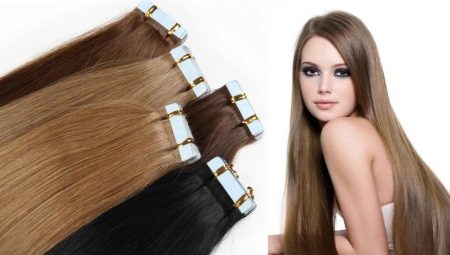Long hair on the girl looks luxurious, and if earlier girls had to wait for years to grow luxurious hair, then today there are many different technologies for fast hair extensions. One of the most popular types of extensions is tape. It is known in wide circles for its ease of implementation and decent quality of the result. You can also highlight that this is the safest look - in a short period of time you can get the desired result without harm to your natural hair.
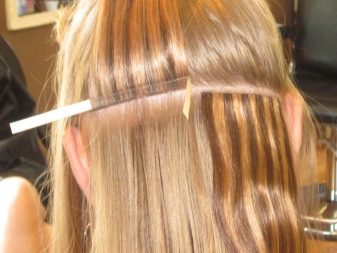
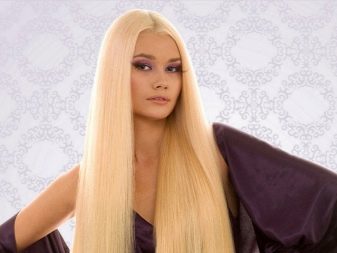
What it is?
Tape hair extensions - this is an artificial increase in the length of the strands by attaching to the natural strands of artificial or donor hair. This variety refers to cold, and therefore does not require thermal exposure. Artificial strands are attached using adhesive tapes, such option is considered one of the very simple and safehowever, you must clearly follow the step-by-step instructions. The technology of building can be tape and micro-tape, it depends on the width of the strand. This type of building includes several factors:
- low cost of materials and the work itself;
- the procedure lasts about an hour;
- correction is necessary only after 3 months of use;
- length can be obtained up to 60 centimeters;
- the width of the strands is from 4 to 6 centimeters.
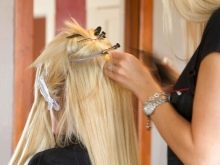

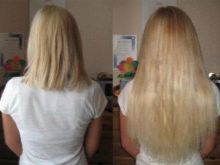
However, it is worth remembering that, like any building, this variety may harm your hair, since the process brings stress to natural hair, due to the increased pressure of the strands on the hair follicles hair may begin to fall out more. Also, the risk of split ends is not excluded.
Micro-tape extension is a method that practically does not differ from the tape, the main difference is in the material, in the first case, narrow ribbons with less hair are used, this allows the procedure to be performed as accurately as possible.
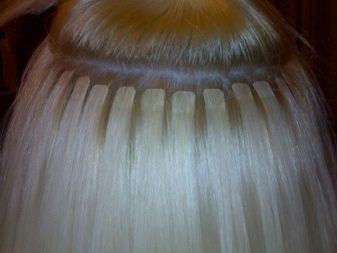
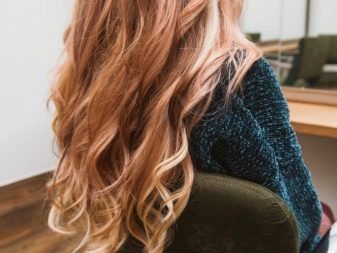
Advantages and disadvantages
With a professional approach There are a lot of advantages of such a build-up:
- fast build-up;
- the safest building of all types;
- with the correct procedure, the extended strands have a minimal effect on the hair roots;
- it is possible to build on very short strands with a length of 3 centimeters or more;
- durability;
- removal of hair extensions occurs without labor and harm to the roots of natural strands;
- the procedure is not very expensive;
- Good for weakened hair.



However, with a number of advantages, this build-up has negative sides:
- possibly harmful effect on natural hair;
- extended hair does not allow you to do some types of hairstyles, for example, standard braids;
- care for such hair is quite expensive, conventional remedies will not work here;
- even with the best quality care for the strands, they will not last for a very long time, there are varieties of extensions even more durable.

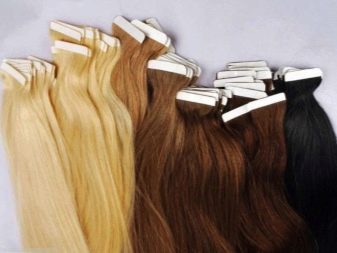
What is required?
This procedure should be carried out only by professional tools and using only high-quality materials. Tools required for the procedure:
- combs with frequent and rare teeth;
- special forceps with even plates, these plates must be in perfect condition, otherwise they will not compress the adhesive strip and lock of hair tight enough, so work will deteriorate;
- special clips that hold only natural strands together;
- special razor with high temperatures to create forms of attached strands.
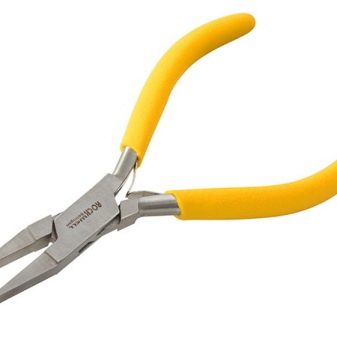
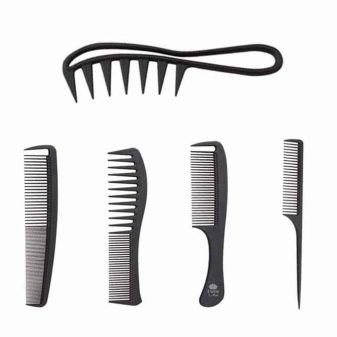
Materials needed to complete the procedure:
- hair woven into a strand attached to the base with special glue;
- new adhesive tape in case you have planned correction;
- It is also necessary to use a cleansing and degreasing shampoo before the procedure.
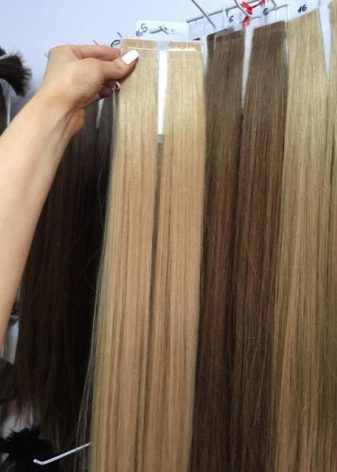
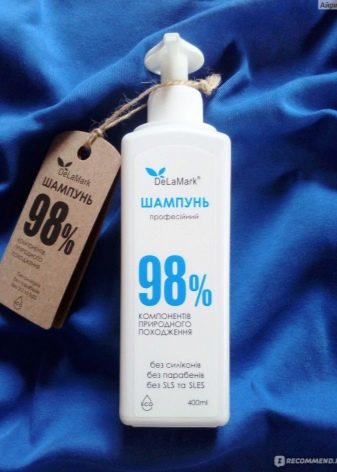
The choice of artificial or donor hair should be approached with all seriousness and responsibility. The color of the extended strands should fully match the natural. Hair is divided into several types, not just straight and wavy, and also on the kind of origin:
- Asian - stands out as the most inexpensive and low-quality hair type, so when using tape extensions, it is not recommended to use such material;
- European - hair is an order of magnitude higher than the previous in quality and overall appearance;
- South Russian - material at approximately European level;
- Slavic - the most high-quality material for building, as hair of this type is distinguished by excellent appearance and durability, also the Slavic kind of material is considered the most expensive.
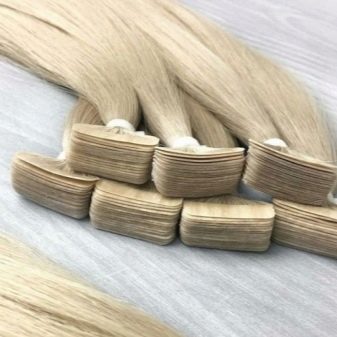

How to make?
At first glance, such a procedure seems very simple and easy to do, however, this is far from the case. Such procedures require very delicate and masterful work according to the schemes, therefore it is better to perform tape hair extensions to a real specialist, so that in the future there will be no problems. At home, it is better not to carry out such a procedure, otherwise there is a risk of spoiling both the expensive material and your own hair. A similar procedure is carried out in several stages.
- For starters, hair is necessary wash, degrease with a special shampoo, preferably several times, completely dry and straighten the strands with an iron.
- Then the employee identifies those areas that you really need to perform buildingso that the final picture looks aesthetically pleasing. Then the hairdresser starts work, usually it happens from the back of the head.At this stage, you need to discuss all the points again, because if you decide to make a high hairstyle, then the ribbons will have to be located above the back of the head, this is necessary so that the ribbons do not stand out much.
- The part of the hair that interferes with the work, cleans up and stabbed. The remaining strands remain and subsequently serve as the basis for donor or artificial ones.

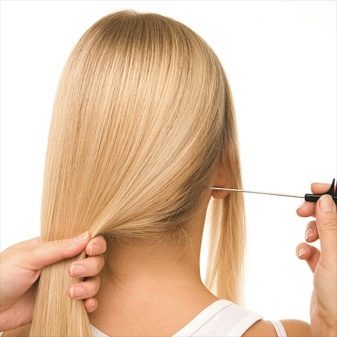
- Further at the discretion of a specialist build method is selected. Some place one tape below the natural hair, deviating from the roots about 2 centimeters, and the second is attached on top of this lock. Others perform each strand in one tape, attaching it in the form of a book, covering natural hair on one side with a half of the tape and on the other, in exactly the same way. You also need to make sure that excess hair does not get on the tape, otherwise they will have to be cut off after the procedure.
- After that you need press the tape to the strand with special forceps for 10 seconds.
- Such procedures are performed at every place pre-selected by a professional, but not closer than 2 centimeters from each other.
- The procedure is performed for about an hour, depending on the desired length and volume.
- In the end, you need to dissolve all the hair, make a hairstyle and make sure all tapes are attached well, never appear and do not spoil the appearance of the hairstyle.
- The process of micro-tape extension is practically no different from the usual one, the only difference will be at stage 5, while the extension, the attachment option in the form of a book is not used, micro tapes are attached to the hair from two sides.
It is important to correctly determine the moment when you really need to complete the build-up, as well as find a true professional who will do the job for you in a quality manner.
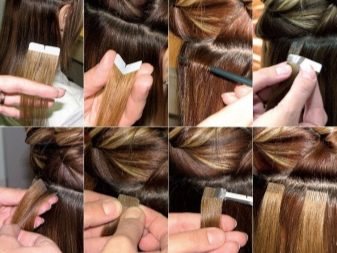
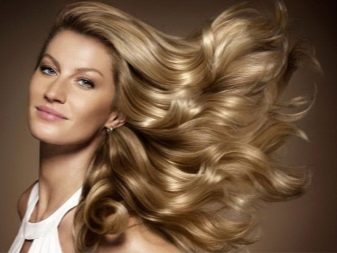
How to take off?
After building, there are such moments when you think about removing artificial hair or simply about their correction. This procedure in terms of complexity practically does not differ from the building procedure itself and takes place in several stages. To remove or adjust hair extensions you will need:
- combs with rare and frequent denticles;
- hairdressing scissors;
- cotton pads;
- special clamps;
- professional tape remover;
- new ribbons with donor hair - in case of adjustment.
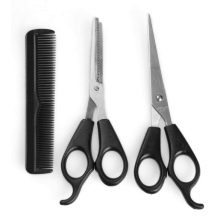
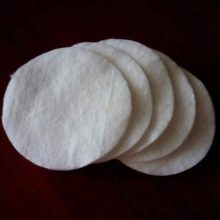
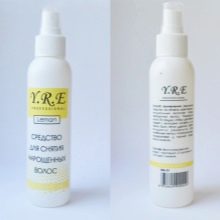
The removal process itself is a bit simpler than the extension process itself, and includes the following steps.
- The first step here, unlike the previous procedure, is optional. Namely - washing, drying and straightening hair.
- First you need to determine the area with artificial strands.
- A professional remover should be applied to the selected strands and soaked for 4-6 minutes.
- Then you need to carefully remove the tape, and comb out the remainder of the adhesive base with a comb with rare teeth.
- Re-apply the liquid to remove the extension of hair on a cotton pad, as well as on those places of hair where there were artificial strands and carefully remove any glue base with the disc.
- Next, rinse your hair with shampoo.
- The next step is selected depending on whether you are doing the correction or just removing the tape. In the first case, the hair needs to be degreased and tape extension should be continued at the stages that were described earlier. If you just take off the artificial locks, then you just need to wash your hair with a restoring balm.

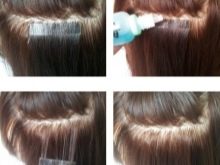
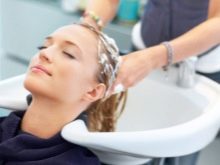
Also at the stages of removing the tapes, you can use sea buckthorn oil, shea butter, or any other one intended for hair. The oil will allow you to better and faster remove the remaining glue from your natural hair.
Care Tips
Modern adhesive bases for tape building are made very high quality, so they are durable, however, There are a number of factors that reduce the potential use of artificial or donor strands:
- exposure to hair of any chemical or thermal factors;
- incorrect staining;
- getting on the glue base of various balms and conditioners;
- improper shampooing or poor-quality shampoos.
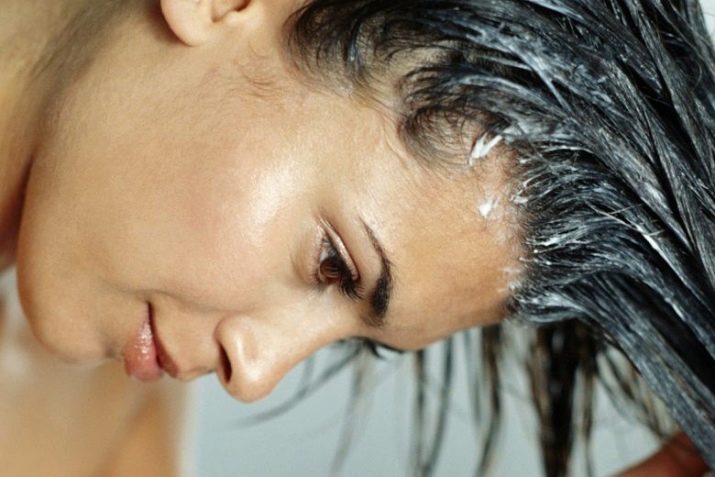
These factors should be avoided and properly taken care of by your hair, otherwise the accrued material will quickly become unusable. Ideally The following tips should be followed during care.
- Before going to bed, collect hair and don't sleep with loosesince the artificial strands are easily entangled.
- Do not overdry and do not “burn” the hairline with a hairdryer and various curling irons.
- Do not sleep wet - This also leads to tangled hairs.
- Each time comb the hair from the roots to the ends, but no more than three times a day.
- It is preferable to use a comb from a natural material and with rare cloves.
- Use special care products for hair extensions, apply these funds only at the ends.
- Hair need wash once or twice a week, as it gets dirty, with high-quality, preferably natural, shampoos. In the first day after the procedure, it is better to refrain from washing your hair so that the water does not soften the adhesive base.
- Do not do tight hairstylesso as not to create additional load on the strands.
- Ask your hairdresser all questions about visiting baths and saunas, as in those rooms there are high temperatures that can harm hair extensions.

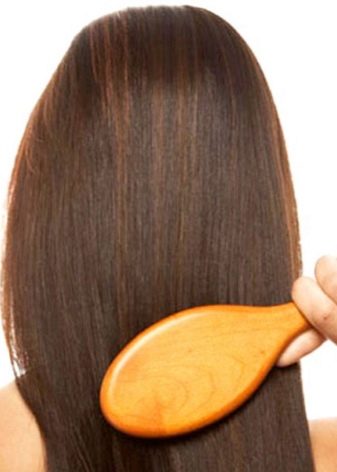
Also, do not forget about the procedure for correcting this type of extension, during which the ribbons with artificial or donor strands are updated, as well as with hair coloring if necessary. If you still decide to dye your hair during correction, then it’s better to follow a few rules:
- staining of such strands should be carried out by a professional who has already worked with tape building and is familiar with all the subtleties of this procedure;
- donor Slavic hair is an ideal option for dyeing, they tolerate this procedure without any side effects;
- Asian donor materials should not be painted, just as it is not worth repeatedly dyeing or lightening artificial strands.
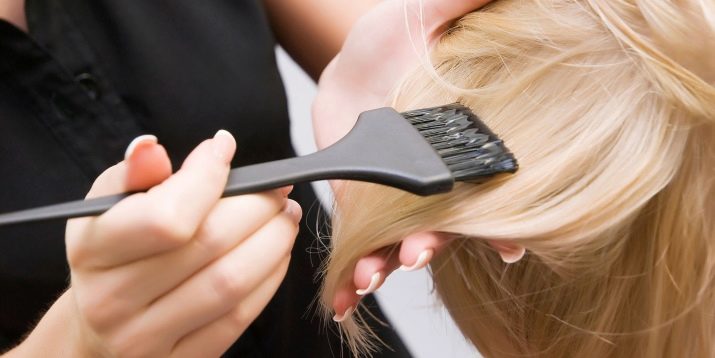
Reviews
There are a lot of reviews about this procedure, most of them are positive, however, do not forget that here materials that are used for tape building play a very important role. Most reviews are aimed at difficulties washing extended hair, since it requires a special approach and special tools. However, all the people who identified these problems immediately expressed the opinion that this small drawback is compensated by the excellent appearance of the hair after this procedure.
Also, most people in their reviews highlighted the fact that everything completely depends on the specialist performing this procedure. If you are dealing with a real professional, then you will leave the salon completely satisfied, after the procedure, the hair lasts a long time, looks neat and beautiful, and all the small negative features of this extension are minimized.

Judging by the reviews, the Angelohair artificial and donor hair shop, which is distinguished by the quality of service and products in general, should be noted. Internet users say that hair looks like naturalvery soft and silky, and also pleasant to wear. Some are confused by the price of the goods, however, others, on the contrary, note that the quality of the goods fully justifies its value.
The result of tape building is a delightfully thick, voluminous and beautiful hair. If you ideally select materials and a specialist, then the extended hair will look absolutely like real, natural.
Many experts note that this type of extension is the best and safest, the main thing is proper care, and then you will get beautiful extensions for a long time.
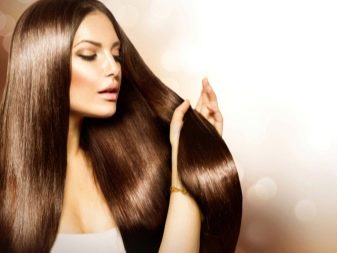
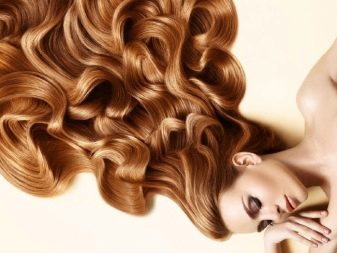
About the features of tape hair extensions, see the next video.
